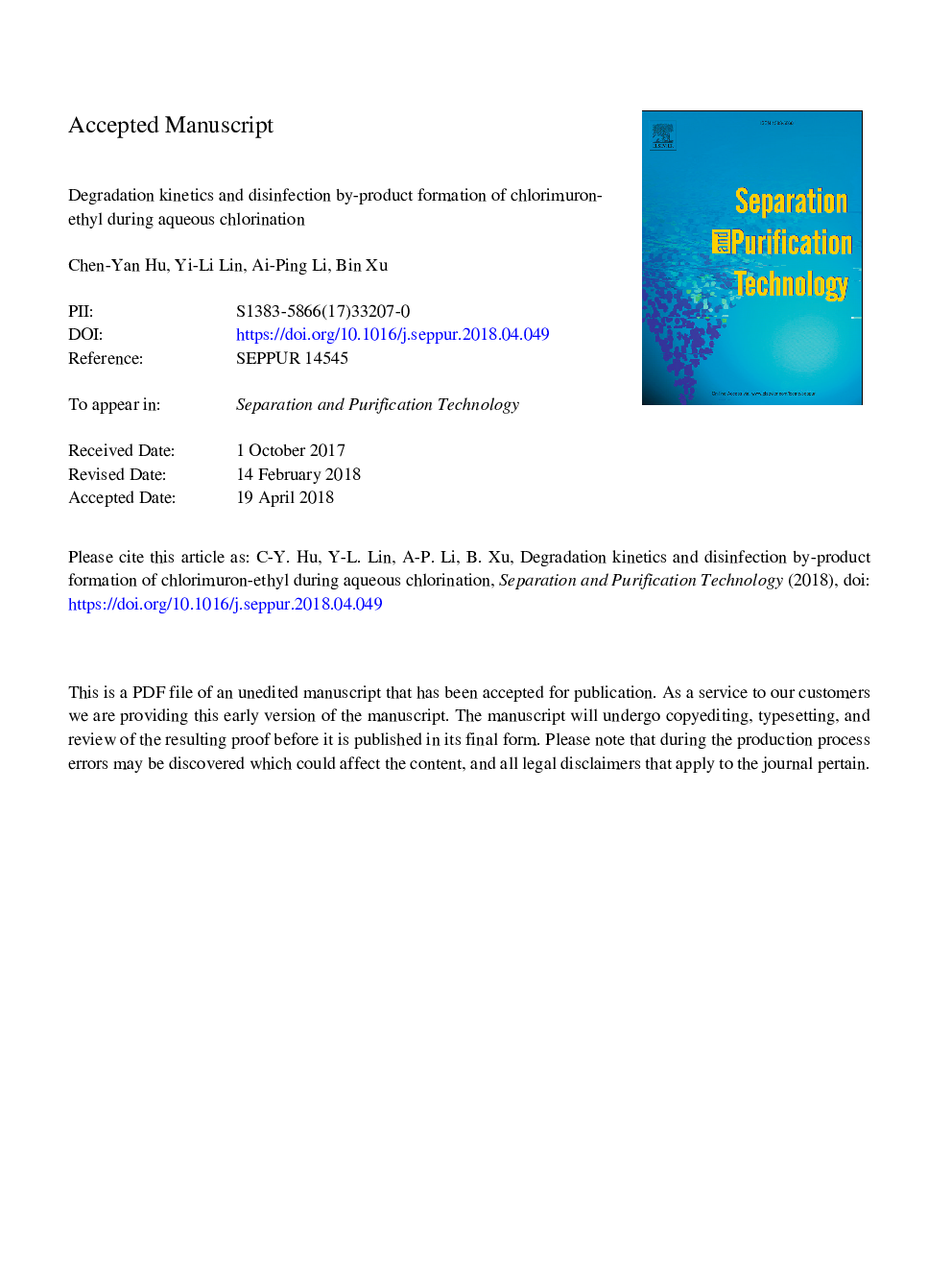| کد مقاله | کد نشریه | سال انتشار | مقاله انگلیسی | نسخه تمام متن |
|---|---|---|---|---|
| 7043644 | 1456916 | 2018 | 33 صفحه PDF | دانلود رایگان |
عنوان انگلیسی مقاله ISI
Degradation kinetics and disinfection by-product formation of chlorimuron-ethyl during aqueous chlorination
ترجمه فارسی عنوان
سینتیک تخریب پذیری و ضدعفونی شدن تولید محصول کلریمورون-اتیل در طی کلر آبی
دانلود مقاله + سفارش ترجمه
دانلود مقاله ISI انگلیسی
رایگان برای ایرانیان
کلمات کلیدی
موضوعات مرتبط
مهندسی و علوم پایه
مهندسی شیمی
تصفیه و جداسازی
چکیده انگلیسی
The degradation kinetics of chlorimuron-ethyl during chlorination was analyzed, and the effects of the influencing factors of pH, bromide and ammonium concentrations and reaction temperature on degradation kinetics were evaluated. Regarding degradation kinetics, the chlorination of chlorimuron-ethyl followed second-order kinetics, first-order kinetics when the chlorine concentration was changed, and first-order kinetics when the chlorimuron-ethyl concentration was changed. The apparent second-order rate constant was calculated, which significantly decreased increasing pH. The rate constant of the reaction between chlorimuron-ethylâ and HOCl was calculated as 3.25 (±1.14)â¯Ãâ¯103â¯Mâ1â¯minâ1, and under the acid-catalyzed condition, the rate constant significantly increased to 6.41 (±1.62)â¯Ãâ¯107â¯Mâ1â¯minâ1. The degradation rate of chlorimuron-ethyl decreased with increasing bromide (at pH 5.5-7.0) and ammonium concentrations (â¤6â¯Î¼M). Chlorimuron-ethyl chlorination is an endothermic reaction, with an activation energy estimated as 22.46â¯kJâ¯molâ1 using the Arrhenius equation. During chlorimuron-ethyl chlorination, chloroform was the major volatile degradation product during chlorimuron-ethyl chlorination, and its concentration increased with the increasing reaction time and pH level. The distribution of disinfection by-products (DBPs) formed at different solution pH levels was quite distinct. In the presence of bromide, the concentration and species of brominated DBPs increased with the increasing bromide concentration. Notably, carcinogenicity and mutagenicity of brominated DBPs were higher than their chlorinate analogs.
ناشر
Database: Elsevier - ScienceDirect (ساینس دایرکت)
Journal: Separation and Purification Technology - Volume 204, 2 October 2018, Pages 49-55
Journal: Separation and Purification Technology - Volume 204, 2 October 2018, Pages 49-55
نویسندگان
Chen-Yan Hu, Yi-Li Lin, Ai-Ping Li, Bin Xu,
